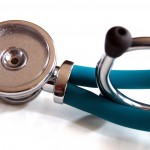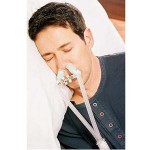 According to new medical research, there is a link between obstructive sleep apnea and strokes. This serious sleep disorder, which is characterized by intermittent snoring and stop-starts in breathing, is believed to be a trigger for strokes and post-stroke complications.
According to new medical research, there is a link between obstructive sleep apnea and strokes. This serious sleep disorder, which is characterized by intermittent snoring and stop-starts in breathing, is believed to be a trigger for strokes and post-stroke complications.
Since approximately nine percent of the population suffers from obstructive sleep apnea (whether diagnosed and treated or undiagnosed and untreated), it’s important to understand the correlation between strokes and this common sleep disorder.
If you suffer from night-time snoring and stop-starts in breathing, you might not realize that your sleep problems may have long-term and grave consequences. Therefore, it’s vital to get proactive about treating your obstructive sleep apnea.
If you haven’t developed this sleep disorder and you want to guard against strokes, you should also consider lifestyle changes that will minimize the risk of developing OSA (obstructive sleep apnea).
In addition to the risk of stroke, sleep apnea causes a wide range of unpleasant symptoms and side effects, including daytime fatigue, morning headaches, loss of mental acuity and mood swings.
One of the best ways to avoid obstructive sleep apnea is by staying at a healthy weight. Sometimes, weight gain that affects neck circumference causes slackening of muscles within the throat, which triggers obstructive sleep apnea. Therefore, exercising regularly in order to control your weight should be a priority.
In addition, giving up bad habits that may contribute to the development of OSA is also important. Examples of bad habits that trigger sleep apnea include smoking and drinking alcohol.
By exercising, following a low-fat diet, and eschewing booze and cigarettes (or cigars), you will create a strong defense against obstructive sleep apnea and the risk of stroke that comes along with it.
How to Treat Obstructive Sleep Apnea
According to doctors, only one form of treatment really has the power to stop the symptoms and side effects of obstructive sleep apnea. This treatment is known as CPAP, or continuous positive airway pressure. CPAP therapy happens when patients use CPAP machines to regulate airflow while they sleep.
These machines are hooked up to CPAP nasal masks that deliver pressurized air in carefully-measured doses, all through the night. CPAP therapy keeps the airway open, allowing obstructive sleep apnea sufferers to get the vital oxygen flow that they need.
By restoring proper breathing patterns and arresting the stop-starts in breathing that typify this serious sleep disorder, CPAP therapy works miracles. In addition, since no prescription medication is necessary during CPAP therapy, it’s a safe and natural way to get the obstructive sleep apnea treatment that you need.
Today’s CPAP masks are soft, supple, and comfortable. They may be adjusted for a perfect fit. CPAP machines are high-tech, but very simple to use, and they often come with a range of appealing and practical features including heated humidifiers (to deliver air at just the right temperature), alarm clocks, and programs that track sleep patterns.
The cost of CPAP therapy may be covered by your health insurance. If you want to avoid the risk of stroke, ask your doctor to test you for obstructive sleep apnea today. Then, get the treatment that you deserve, by seeking out a high-quality CPAP machine and other CPAP accessories.

